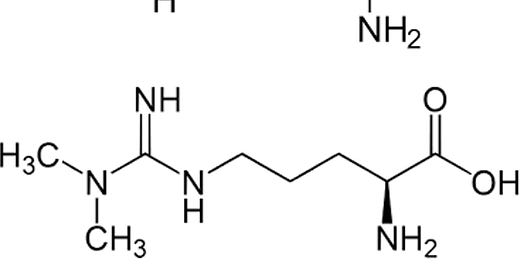As you can easily see from the above diagrams, the structure of arginine (above) and asymmetric dimethyarginine (below) are identical except that on the left side asymmetric dimethyarginine (ADMA) has two methyl groups (CH3) attached to nitrogen (N) instead of the two hydrogen atoms attached to nitrogen in arginine. This very similar chemical structure …
Keep reading with a 7-day free trial
Subscribe to Slow Aging and Delay Chronic Disease Development to keep reading this post and get 7 days of free access to the full post archives.




